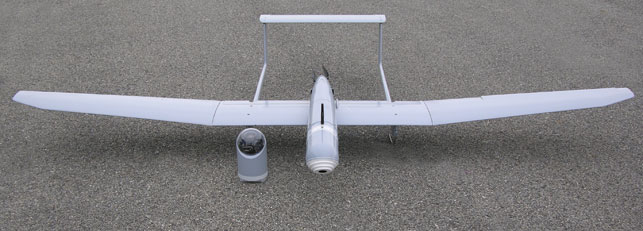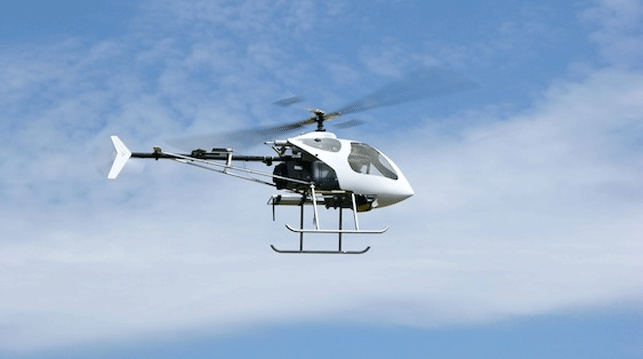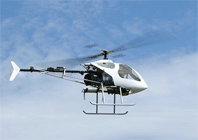UAVs have a mixed reputation, from lifesaving eyes in the sky; robotic aids to industry, or remotely deployable killing machines, and they’re becoming more commonplace in everyday life.

Survey Copter designs and produces remote controlled systems incorporating products from several ranges including aeroplane type fixed-wing UAVs
We tend to associate the use of such vehicles as diligent dogs of war, with Predator drones monitoring international borders, and Reapers unleashing missiles at suspected terrorist outposts.
However, as bills and laws are passed we’ll see UAVs fulfilling a variety of needs in the skies, meaning that the industry of designing and manufacturing them is taking off fast.
A recent report from the trade body Association for Unmanned Vehicle Systems International suggests that over 90 per cent of the economic impact of drones will come as agricultural machinery.
Currently used by farmers to spray crops and keep track of growth rates, drones will also benefit scientists and environmental researchers in conservation surveying and more.
The dependency on aerial devices is seen as a key tool in the survival of many species, including mankind.
Future manufacturing now
As companies strive to get ahead in this developing market, the fastest manufacturing processes to produce such differing craft are key, which is why many have turned to 3D printing.
French company Survey Copter, a subsidiary of the European Aeronautic Defence and Space Company N.V. (EADS), has taken to using additive manufacturing for a wide number of purposes.

Jean-Marc Masenelli, managing director, Survey Copter
Ranging from a few millimetres up to parts measuring 40cm x 10cm, these components comprise of mechanical structures for optical turrets, structural elements, battery compartment housings, supporting structures, and scale models.
The range includes helicopter and fixed-wing variants weighing up to 30kg and 10kg respectively.
Survey Copter is spearheading its prototyping and short-run manufacturing activities, with a Stratasys Fortus 400mc and Dimension Elite 3D Printer. These systems offer nine production-grade engineering thermoplastics using Fused Deposition Modelling (FDM.
For Survey Copter, the ability to utilise different materials according to the needs of specific applications offers key advantages for producing durable 3D printed parts.
Such materials include FDM thermoplastics polycarbonate, ABS and high performance ULTEM 9085, which boasts strength and lightweight properties, as well as other desirable characteristics including flame, smoke and toxicity rating.
“The Stratasys 3D Printer can produce parts with complex shapes,” states Jean-Marc Masenelli, managing director of Survey Copter.
“This specific capability enables us to produce parts of wide-ranging dimensions and hollow forms, as well as full honeycomb structures.”
Materials taking off
Key to developments are the discoveries by old aerospace powerhouses of the abilities of recent 3D printing developments in materials.

Both fixed-wing and helicopter drones can benefit from 3D printed parts
“There’s been quite a bit of background work done in the last few years on additive manufacturing for aerospace – particularly Fused Deposition Modelling (FDM),” explains Stratasys vice president Jeff DeGrange, who also has a background in aerospace design.
“It’s the material properties that they like. If you wanted to have higher airspeeds, altitudes or payloads, you can wrap the FDM with a couple of plies of fibreglass, Kevlar or carbon fibre to make it really strong.”
Wing design
The honeycomb structures, integral to wing design, can be varied uniquely through digital design.
“From a cross section, you can see the printed internal structure – spars, ailerons and the like. We actually came up with some build techniques so we could have the machine bridge the internal structure and print the outer skin on to it.
“Different wings need different control surfaces and cell configurations. If you want a lightweight wing you can choose the right design and get extended ranges on your battery-powered UAVs.
“If you wanted to carry a payload then you may need to have a stiffer wing, so you can have something that has more strength properties to it.”
The big draw of 3D printing for the UAV industry is part integration, tightening up development and manufacturing time.
“We’re always trying to put 10lbs of stuff in a 5lbs area!” laughs DeGrange. “Now you can start to optimise where you can put all your electronics and systems components inside.
“You can combine parts together so that you can reduce 100 part assemblies down to maybe five or six part assemblies, and combine them all in your CAD design and use the technology to build them.
“That’s where the real power of additive manufacturing is. Once you start partnering it with other predictive software packages, now you can come up with optimal part designs – and you can build it with no cost penalties.”
Next in the development process is the use of analysis tool-based design, coupled with 3D topology design tools. Stratasys is currently developing values for its build materials that can be fed into Ansys’ finite element analysis (FEA) tools to assist in the design of future drone and aircraft parts.
survey-copter.com | stratasys.com
Stratasys 3D printing gets Survey Copter UAVs airborne
Default






